
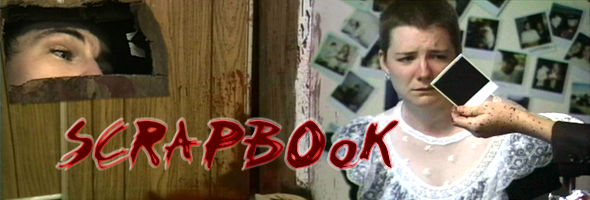
Color, 1999, 95 mins. 6 secs.
Directed by Eric Stanze
Starring Emily Haack, Tommy Biondo
Saturn's Core Audio & Video (Blu-ray) (US R0 HD), Sub Rosa/Wicked Pixel, Image Entertainment (US R1 NTSC)
In the increasingly crowded world of 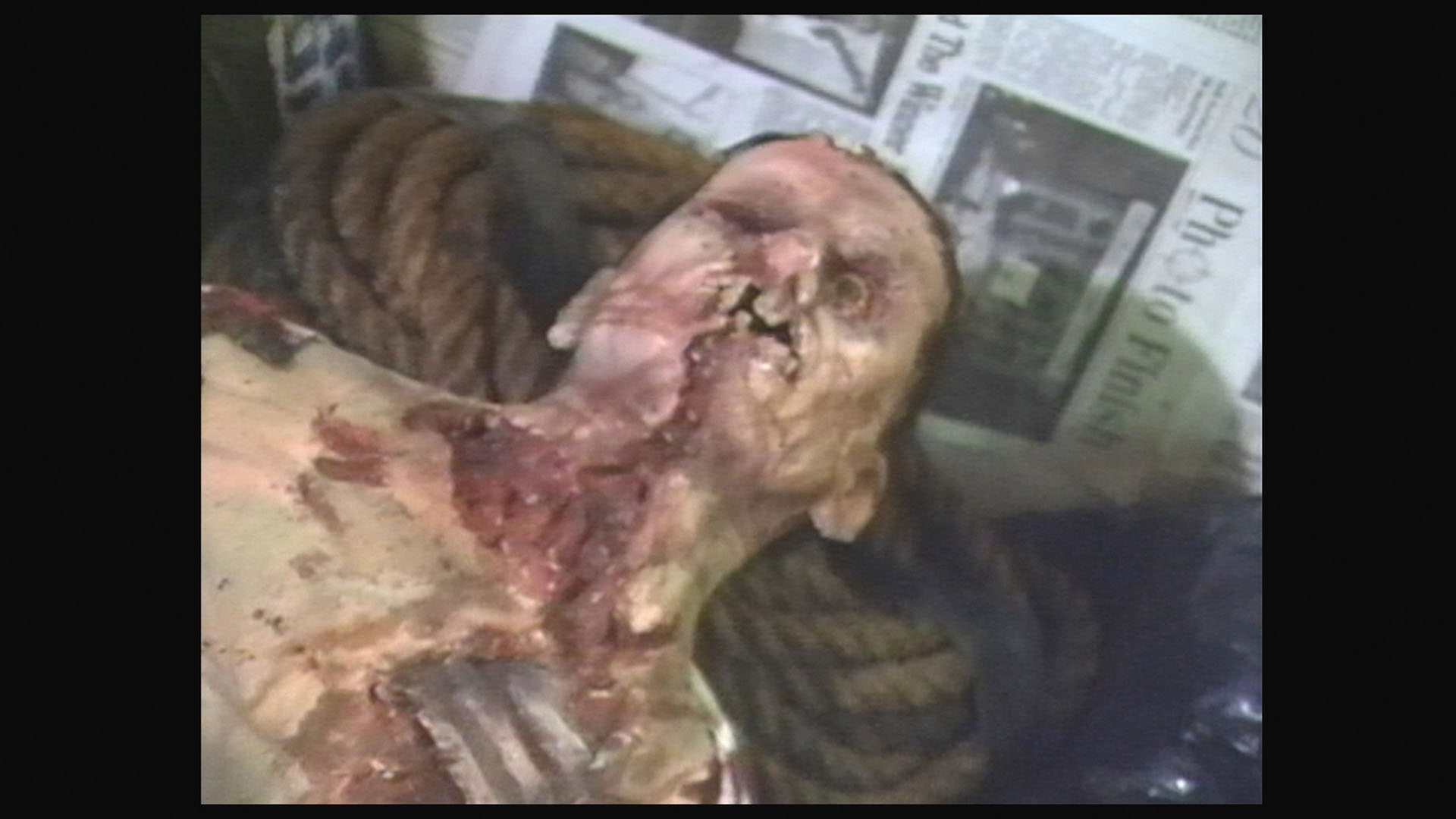 shot-on-video horror long before digital HD productions were popping up every two seconds, it was still difficult for many projects to even see
shot-on-video horror long before digital HD productions were popping up every two seconds, it was still difficult for many projects to even see 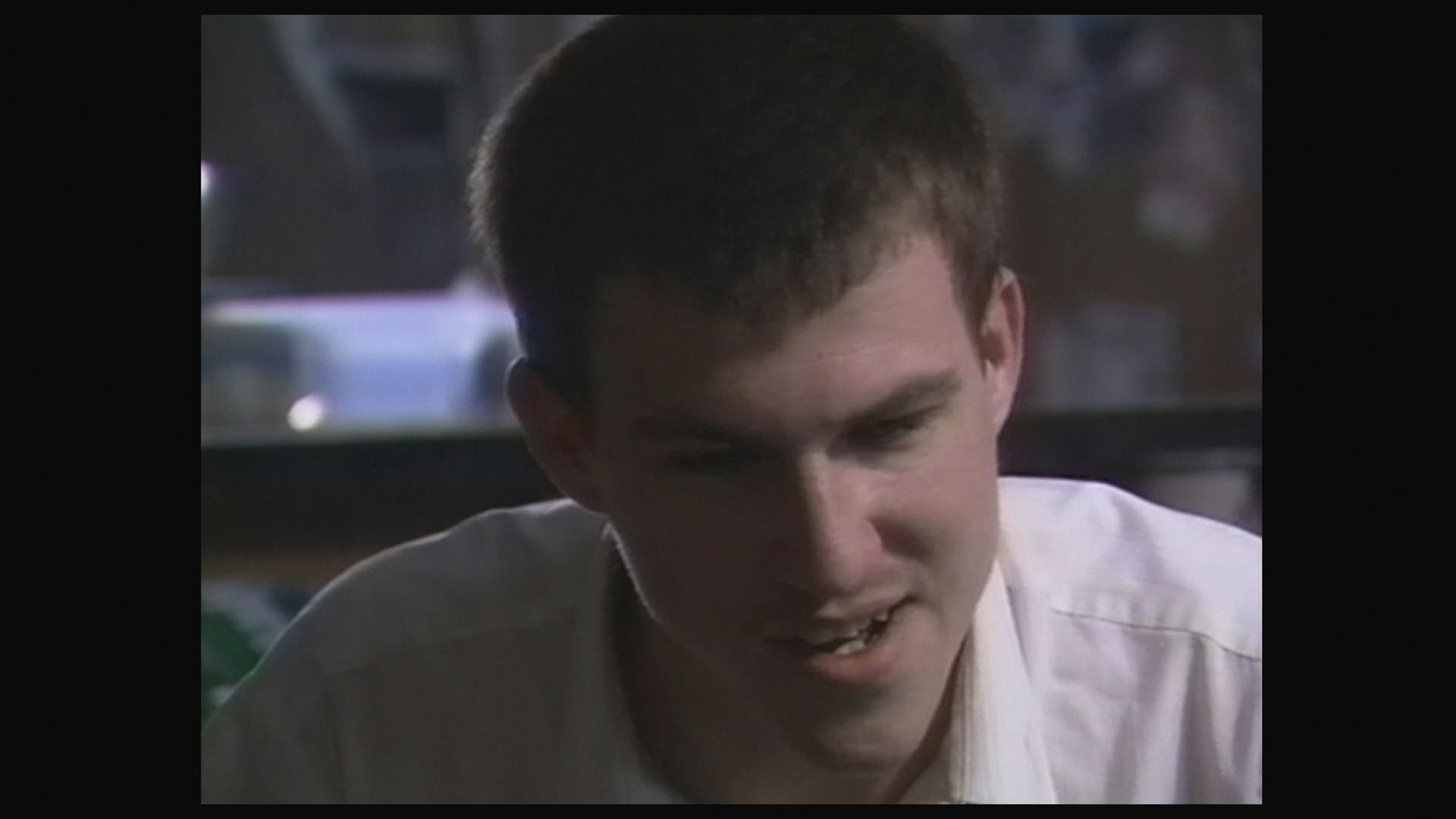 the light of day, much less garner any attention. However, that proved to be no obstacle for the ferocious and highly accomplished Scrapbook, which earned its share of both critical accolades and censorship hassles. The initial video covers warned that it "contains extremely disturbing material," which in this case turns out to be understatement instead of hype.
the light of day, much less garner any attention. However, that proved to be no obstacle for the ferocious and highly accomplished Scrapbook, which earned its share of both critical accolades and censorship hassles. The initial video covers warned that it "contains extremely disturbing material," which in this case turns out to be understatement instead of hype.
The film plunges immediately into the environment of a seriously unhinged man named Leonard (played by the film's writer and production designer, Tommy Biondo, who died due to a filming accident on another shoot before he could see the finished product). After a puzzling and effective prologue in which he's taunted by his naked sister and subjected to vicious abuse, we meet his latest captive, Clara (Haack), who's bound to a chair in his kitchen papered with Polaroid snapshots. After brutally raping her, Leonard explains that he maintains a scrapbook filled with the thoughts, scribblings, and cries for help from his victims, and since the book is almost full after twelve years, Clara may be the last one necessary to complete the masterpiece that will make him a media star. Clara's written response doesn't please him, to put it mildly, and punishment is swift. Living in a farmhouse in the middle of nowhere, Leonard has the perfect set up to dispose of his victims in the nearby barn. However, Clara begins to closely analyze the scrapbook, devising a way to prolong her life, explore the mind of her captor, and perhaps even escape.
While many viewers may be tempted to flee in shock from the sucker punches delivered in the opening third, Scrapbook is hardly your standard exercise in prurient sadism. Both of the actors deliver impassioned, uncomfortably convincing performances, often naked both physically and emotionally. Haack's modulations between shock, terror, and crafty manipulation are among the best in the rape/revenge subgenre, and the viewer's sympathies rest solidly with her all the way. Also known for his cult favorite Ice from the Sun, director Eric Stanze uses the digital video format to his advantage here, creating a smothering atmosphere of claustrophobia and using deliberately distorted, damaged video footage during one harrowing montage in a shower. Interestingly, despite the 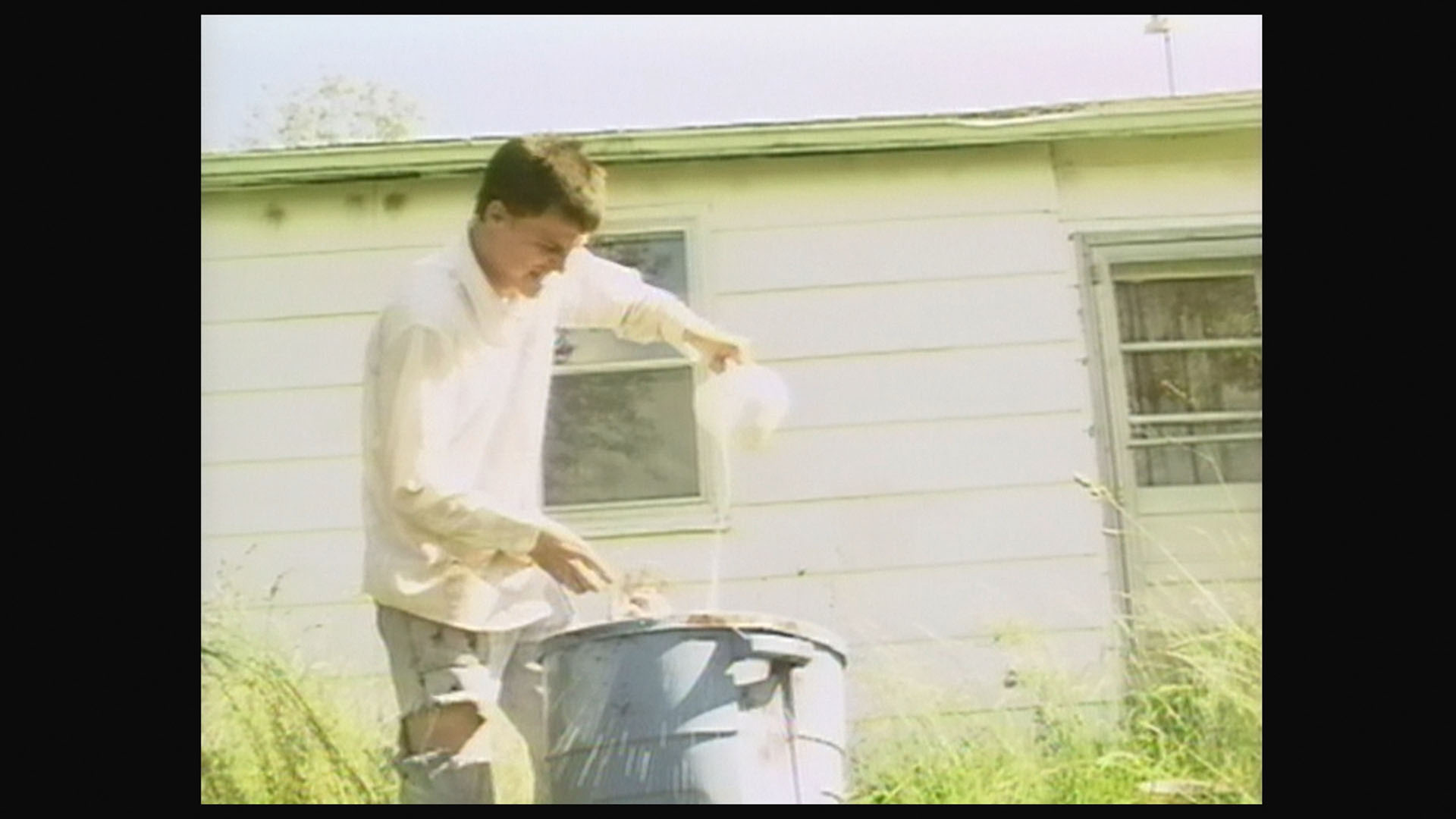 brutality of the subject matter, the level of on-screen gore is fairly low considering the film's reputation. Most of the shock value comes instead from the horrific intensity of the performances and the gruesome sexual violations of Clara's ordeal, including a brief sojourn into kinda-sorta-hardcore
brutality of the subject matter, the level of on-screen gore is fairly low considering the film's reputation. Most of the shock value comes instead from the horrific intensity of the performances and the gruesome sexual violations of Clara's ordeal, including a brief sojourn into kinda-sorta-hardcore  territory that's bound to keep this off the shelves at Blockbuster for all eternity. Fortunately the film does include a few brief glimmers of humor, however dark, including one particular monologue that deserves a place in the sick joke pantheon. Going into this one, bear in mind that this is very much in the tradition of SOV regional filmmaking as several viewers in subsequent years have derided it for not being the equal of films like Henry: Portrait of a Serial Killer or Last House on the Left. These are completely different playing fields.
territory that's bound to keep this off the shelves at Blockbuster for all eternity. Fortunately the film does include a few brief glimmers of humor, however dark, including one particular monologue that deserves a place in the sick joke pantheon. Going into this one, bear in mind that this is very much in the tradition of SOV regional filmmaking as several viewers in subsequent years have derided it for not being the equal of films like Henry: Portrait of a Serial Killer or Last House on the Left. These are completely different playing fields.
Sub Rosa's impressively mounted DVD edition of Scrapbook begins with jittery, tape-shredded menus which nicely capture the ambiance of the film itself. The transfer looks extremely good, especially considering the formats involved, and the surround audio (featuring a nerve-jangling electronic/musique concrete score) is brutally manipulative. Stanze, Haack, and producer Jeremy Wallace appear on a highly engaging commentary track, in which all of them admit to certain levels of difficulty with making and even watching the film. However, they all have respect for each other and the final product, with several interesting stories about the technical execution. (Of course, be warned that it's also probably the only time you'll hear a horror film's lead actress recall, "We planned the urination. He asked me beforehand, and I said yeah, just don't do it on my face.") A very welcome 15-minute "Making of Scrapbook" shows the lighter and more clinical side of things, with an interesting explanation of how the crew participated in the scrapbook's creation and the surprising revelation that one performer had no idea how the final scene would play out while the cameras were rolling.
Other extras include two fairly intense Scrapbook trailers along with three other Stanze trailers, Ice from the Sun, I Spit on Your Corpse - I Piss on Your Grave, and Savage Harvest. A small stills gallery and a Biondo remembrance by Stanze round out the obvious extras, but there are also Easter eggs within Easter eggs. "Chokehold" is a grim black-and-white short film about drug addiction and blurred reality directed by Haack, while "Survive" is a Biondo-directed black-and-white short about a deranged homeless soldier, featuring Stanze as "the apparition." Stanze's music video for the Ded Bugs' "Slugs Are in My House" is a heavy metal homage to horror film classics, while "Shooting Slugs" is a nearly 8-minute compilation of behind the scenes footage from the music video shoot. It's fun to watch but not enough to shake off the lingering unease left behind by the main feature. In 2005, Image Entertainment reissued the film along with other Wicked Pixel titles (which the company didn't review for content as the material was all delivered finished, thus helping it avoid the censorship issues that plagued a 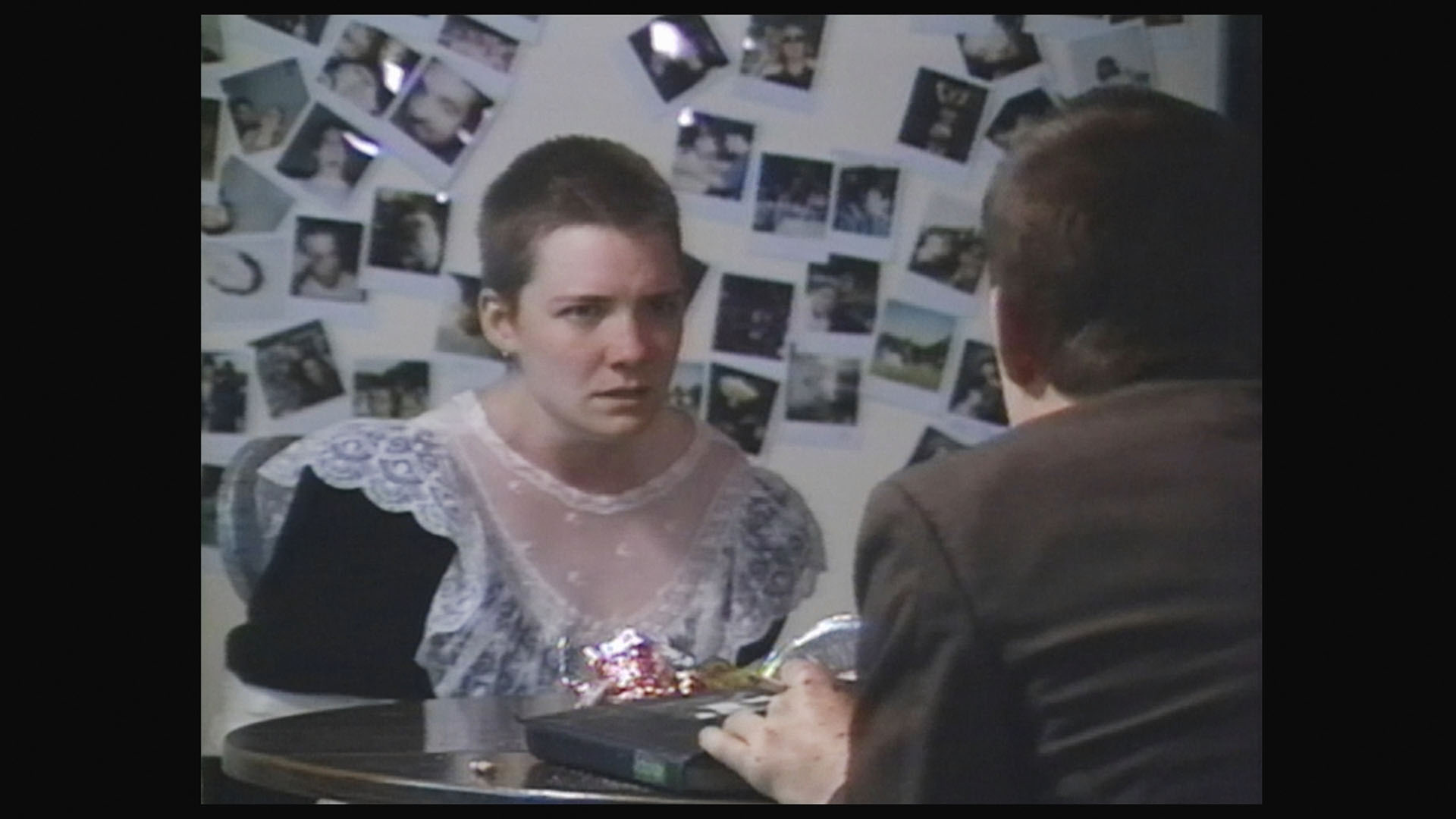 few Something Weird titles).
few Something Weird titles). 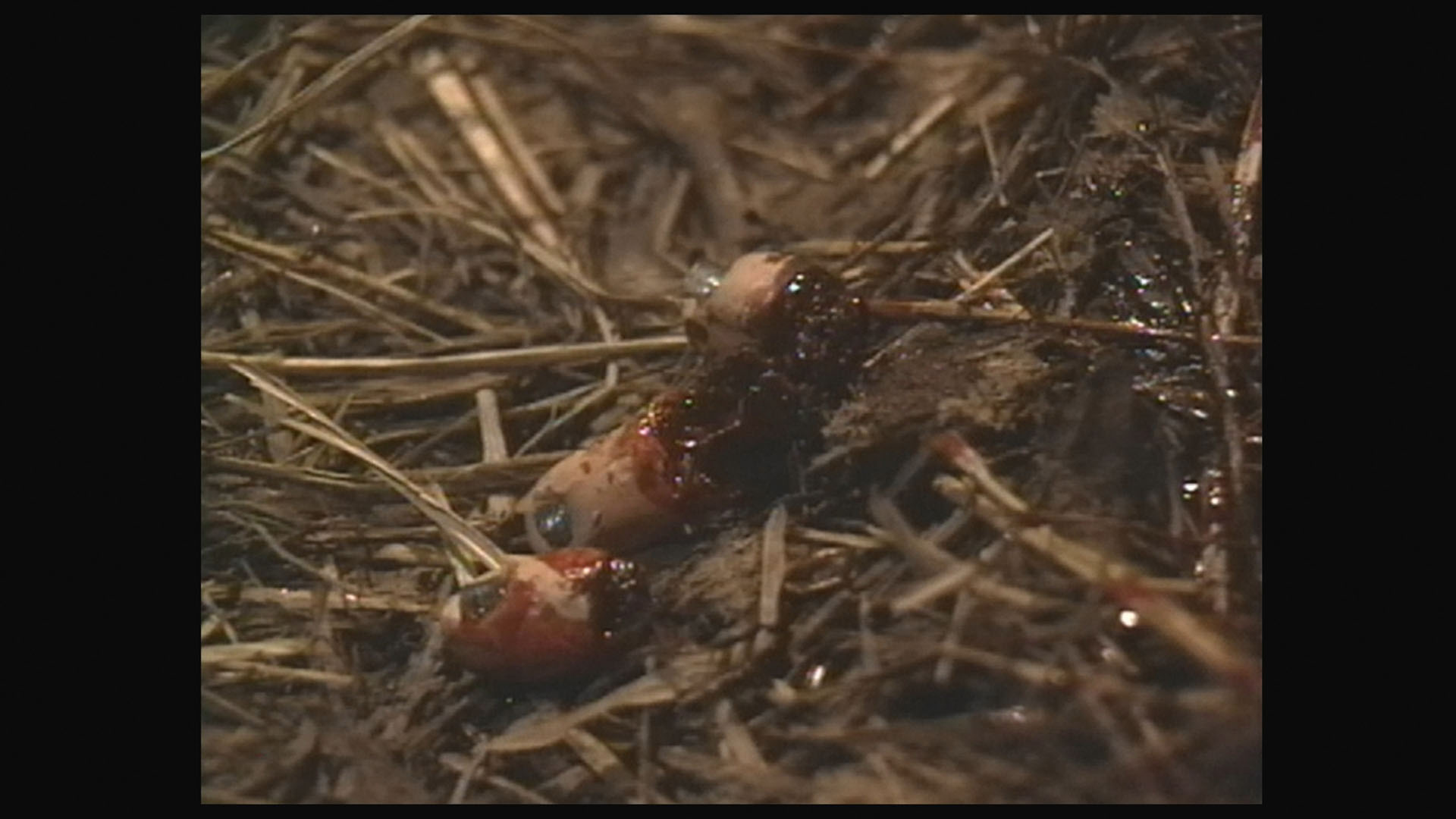 Added there was "The Making of Scrapbook" (26m31s), a making-of featurette with Stanze, Haack, Wallace, and actor-associate producer Todd Tevlin sharing anecdotes from the pre-production and the filming along with tons of on-set footage. Also included is a deleted scene (1m28s) showing an unsuccessful escape attempt, unused because of a tech malfunction.
Added there was "The Making of Scrapbook" (26m31s), a making-of featurette with Stanze, Haack, Wallace, and actor-associate producer Todd Tevlin sharing anecdotes from the pre-production and the filming along with tons of on-set footage. Also included is a deleted scene (1m28s) showing an unsuccessful escape attempt, unused because of a tech malfunction.
In 2023, Saturn's Core added Scrapbook to its roster of shot-on-video epic releases on Blu-ray, with the film itself obviously looking and sounding about the same given how it was shot (albeit with obviously better compression). Optional English SDH subtitles are provided, which can come in particularly handy in a couple of spots. The original commentary is ported over here, but you also get a new solo track by Stanze who's very much in reflective mode studying how the film marked a turning point of sorts after his well-received but less extreme prior two features. There's quite a bit of material here about the Wicked Pixel gang and the many hats people wore in bringing this one to life, and it's interesting to hear a different perspective well over two decades on. The deleted scene and 2005 featurette are also included here, while the new "Afterword: A Look Back at Scrapbook" (32m4s) is a new featurette by Jason Christ with Stanze and Haack reflecting positively on the experience and sharing their personal frames of mind both when the made the film and how they feel now. It's great to see the two on camera again and also makes you really wish the crew would put out a new movie since it's been almost six years. Also included is a behind the scenes stills montage (12m36s) with unused music tracks composed for the film, plus a batch of Eric Stanze / Wicked Pixel Cinema trailers including three Scrapbook trailers, Savage Harvest, Savage Harvest 2: October Blood, Ice from the Sun, Deadwood Park, Ratline, and In Memory Of.
-
Updated review on January 6, 2024



 shot-on-video horror long before digital HD productions were popping up every two seconds, it was still difficult for many projects to even see
shot-on-video horror long before digital HD productions were popping up every two seconds, it was still difficult for many projects to even see  the light of day, much less garner any attention. However, that proved to be no obstacle for the ferocious and highly accomplished Scrapbook, which earned its share of both critical accolades and censorship hassles. The initial video covers warned that it "contains extremely disturbing material," which in this case turns out to be understatement instead of hype.
the light of day, much less garner any attention. However, that proved to be no obstacle for the ferocious and highly accomplished Scrapbook, which earned its share of both critical accolades and censorship hassles. The initial video covers warned that it "contains extremely disturbing material," which in this case turns out to be understatement instead of hype. brutality of the subject matter, the level of on-screen gore is fairly low considering the film's reputation. Most of the shock value comes instead from the horrific intensity of the performances and the gruesome sexual violations of Clara's ordeal, including a brief sojourn into kinda-sorta-hardcore
brutality of the subject matter, the level of on-screen gore is fairly low considering the film's reputation. Most of the shock value comes instead from the horrific intensity of the performances and the gruesome sexual violations of Clara's ordeal, including a brief sojourn into kinda-sorta-hardcore  territory that's bound to keep this off the shelves at Blockbuster for all eternity. Fortunately the film does include a few brief glimmers of humor, however dark, including one particular monologue that deserves a place in the sick joke pantheon. Going into this one, bear in mind that this is very much in the tradition of SOV regional filmmaking as several viewers in subsequent years have derided it for not being the equal of films like Henry: Portrait of a Serial Killer or Last House on the Left. These are completely different playing fields.
territory that's bound to keep this off the shelves at Blockbuster for all eternity. Fortunately the film does include a few brief glimmers of humor, however dark, including one particular monologue that deserves a place in the sick joke pantheon. Going into this one, bear in mind that this is very much in the tradition of SOV regional filmmaking as several viewers in subsequent years have derided it for not being the equal of films like Henry: Portrait of a Serial Killer or Last House on the Left. These are completely different playing fields. few Something Weird titles).
few Something Weird titles).  Added there was "The Making of Scrapbook" (26m31s), a making-of featurette with Stanze, Haack, Wallace, and actor-associate producer Todd Tevlin sharing anecdotes from the pre-production and the filming along with tons of on-set footage. Also included is a deleted scene (1m28s) showing an unsuccessful escape attempt, unused because of a tech malfunction.
Added there was "The Making of Scrapbook" (26m31s), a making-of featurette with Stanze, Haack, Wallace, and actor-associate producer Todd Tevlin sharing anecdotes from the pre-production and the filming along with tons of on-set footage. Also included is a deleted scene (1m28s) showing an unsuccessful escape attempt, unused because of a tech malfunction.![]()